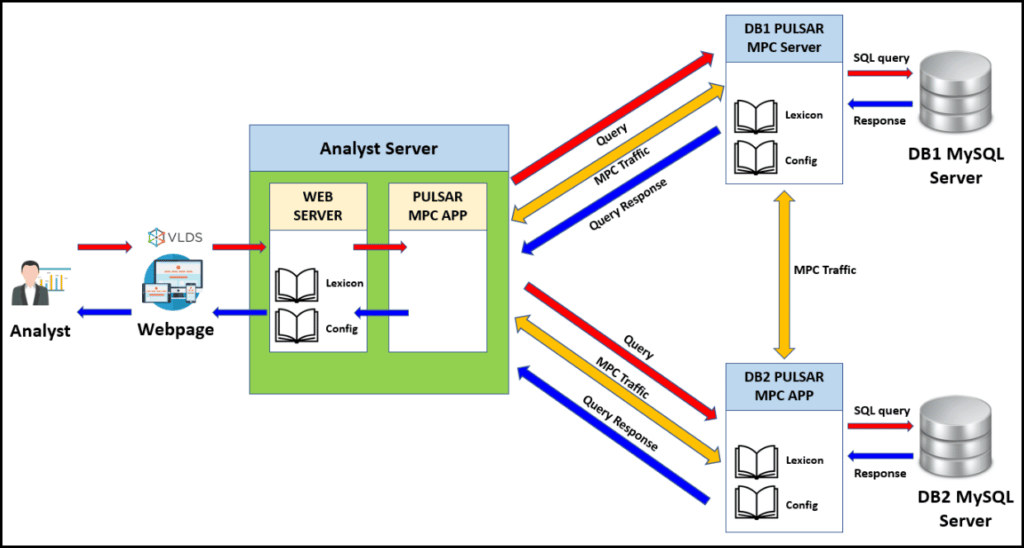
Funded by the DARPA Brandeis program, Stealth developed a test pilot applying our PULSAR technologies for secure computation of statistical reports generated by the Virginia Longitudinal Data System (VLDS). VLDS is a “federated” technology system designed to extract, shape, and analyze data from multiple partnering Viginia government agencies while ensuring the highest levels of privacy. In particular, VLDS enables the efficient creation of customized longitudinal datasets for research studies spanning years of student data from higher education and the workforce, and the system offers regular, annualized reporting with automated data privacy protections that can be tailored to the policies of different organizations.
Stealth leveraged its core PULSAR MPC technologies to create a pilot platform, architecture, and tools for data-private VLDS computations. Specifically, the VLDS prototype enables secure and data-private computations among three parties, a data analyst and two data providers each holding private data sets. The analyst can compute statistical analyses jointly on the two private data sets without needing to see individual data from the data providers. As an example use case, an analyst might be a social scientist who wants to conduct a study of average salaries of graduates depending on their majors and universities. In this setting, one data provider might be the IRS – providing salary data of graduates (e.g. a unique ID and income) – while the other data owner might be a university providing educational data (e.g. unique ID, major, and GPA). Stealth’s MPC engine developed for VLDS features data-private joining between two data sets over a pivot variable (for example, unique ID in the sample use case), as well as data-private statistical computations over privately joined data sets. A key advantage of our solution is that these MPC operations can be performed in a streaming manner, allowing memory usage for each participant to remain constant up to a system parameter tunable by an administrator.
To find out more, see the White Paper.
This work was supported by DARPA and NIWC Pacific under Contract No. N66001-15-C-4065, Distribution Statement A: “Approved for Public Release, Distribution Unlimited. If you have any questions, please contact the Public Release Center”. The views, opinions and/or findings expressed are those of the author and should not be interpreted as representing the official views or policies of the Department of Defense or the U.S. Government.
